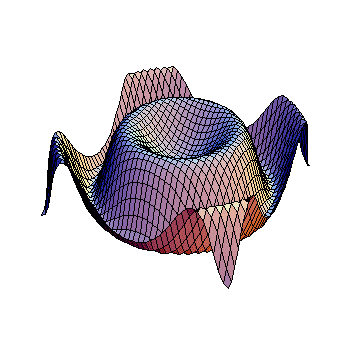Question #15796
1 Answer
Equivalent weight is used for volumetric quantitative analysis, whereas molecular weight can be used for everything else (including volumetric quantitative analysis).
Explanation:
In volumetric analysis - or titrimetry - you use a burette to dispense a solution into a flask which contains the solution you want to analyse (90% of the time, sometimes it can go the other way though), it usually goes like one of two ways:
-
You know the concentration of what's in the burette, the volume of what's in the flask and want to know the concentration of what's in the flask.
-
You know the concentration and volume of what's in the flask and want to know the concentration of what's in the burette.
Either way, they're solved by the following equation:
With the volume of the burette being the variable you'll discover experimentally (the right volume is discovered either with help of an indicator - something that will change the color or aspect of the solution after the end point of the reaction - or will be discovered later with aid of something like a voltimeter or condutimeter)
The problem is that that equation I just told you only works if the reaction between whatever is on the burette and what's on the flask is
And when we're working with things like redox reactions, which can get pretty wild with the ratios, equivalent concentrations can really help you.
As a general rule of thumb, the conversion between equivalent weight and molecular weight are:
-
#(MM)/(n. H^+)# (molecular mass over number of reacting protons) for an acid, so for example#HCl# 's molecular weight is the same as its equivalent weight but that of#H_2SO_4# or#H_3PO_4# can be the same or not, depending on how many protons you're titrating. -
#(MM)/(n. OH^-)# (molecular mass over number of reacting hydroxyls) for a base, so for example#NaOH# or#NH_3# 's molecular weight is the same as its equivalent weight but that of#Fe(OH)_3# isn't. -
#(MM)/(n. e^-)# (molecular mass over number of electrons the species donate or receive) for redox reactions, so#Fe^(+2)# which only needs to donate one electron to go to#Fe^(+3)# has the same molecular weight as equivalent weight but#MnO_4^-# that receives 5 to get to#Mn^(+2)# doesn't. -
#(MM)/(n. bonds)# (molecular mass over number of bonds) for complexation reactions, where the metal always has the same molecular weight as equivalent weight. Since we usually use#EDTA# for those kind of titrations, which always bond#1:1# with the metals it bonds, there's no real need to use equivalent weight here. -
#(MM)/(|char\g\e|)# (molecular mass over absolute value of charge) for salts (that are undergoing a precipitation reaction). We usually prefer#1:1# ratios with these as well as too differing molar ratios can make the analysis faulty.
In instrumental analysis, except those that are, at core, volumetric analysis, there's either no need or no way to use equivalent concentration, with units like ppm

